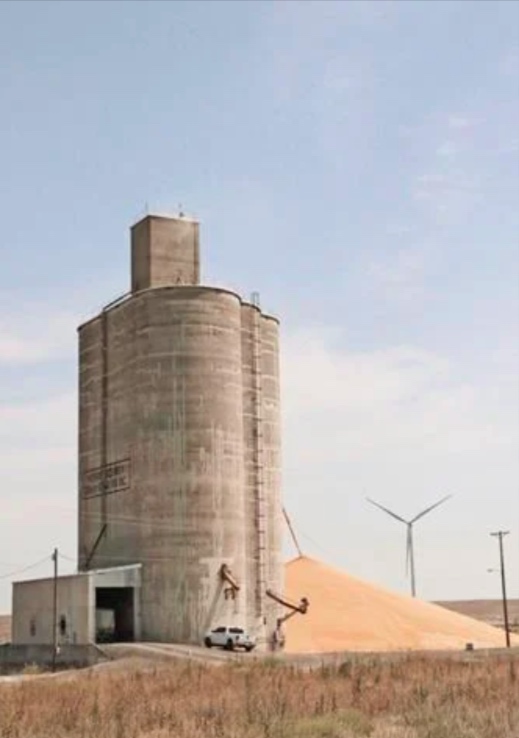forum
library
tutorial
contact

Northwest Wheat Leaders Connect
with South American Buyers
by Matthew WeaverCapital Press, November 11, 2024
|
the film forum library tutorial contact |

|
Northwest Wheat Leaders Connect
by Matthew Weaver |
"Here in the PNW, we don't want to lose any of our modes of transportation,
because that would affect that even more,"
-- Casey Chumrau, executive director of the Washington Grain Commission
 Pacific Northwest wheat leaders recently visited Peru and Chile -- key customers of soft white wheat grown in the region.
Pacific Northwest wheat leaders recently visited Peru and Chile -- key customers of soft white wheat grown in the region.
The three executive directors of the Northwest wheat commodity organizations and a commissioner from each organization went on the trip.
"It was a really good opportunity for us to hear a different perspective from our Asian customers, because in South America they use soft white a lot differently," said Casey Chumrau, executive director of the Washington Grain Commission. "They use it for cookies and crackers, but they also blend a percentage of it into bread wheat.
South American buyers prefer a slightly higher protein than some Asian bakers, who use soft white for sponge cakes and Asian-style breads, she said.
Chumrau welcomed the opportunity to hear about buyers' successes with soft white, and the challenges in importing more.
There was "a lot of conversation there about how we can best position ourselves to meet their needs," said Amanda Hoey, Oregon Wheat CEO.
With the three executives, farmers Clark Hamilton of Idaho, Dana Tuckness of Oregon and Mike Carstensen of Washington made up a "really experienced" group, Chumrau said. Hamilton is the chairman of U.S. Wheat Associates.
"We were able to have really good conversations with the customers and really dig into the preferences, challenges and issues that might come up."
Markets at a glance
Chile is a "very sophisticated" milling industry with 30 years of experience using soft white wheat. It's consistently one of the top 10 soft white wheat markets.
"They are very adept at switching between classes depending on what the price opportunities are," Chumrau said. "Any time the price allows, they're buying soft white. They actually will pay a premium for soft white, up to a point."
Peruvian soft white wheat buyers are consistent, but Northwest wheat farmers want to increase exports there, she said.
Peru is a more price-sensitive market than some other major customers.
"We have more expensive ocean freight from the Pacific Northwest than some of their other origins," Chumrau said.
"Here in the PNW, we don't want to lose any of our modes of transportation, because that would affect that even more," Chumrau said.
Recent lower wheat prices have made soft white wheat more competitive, Chumrau added.
"It's a fine line, because that is really low for our farmers, but is also allowing us to compete a little bit better on the world market," she said. "We have seen an increase in exports this year, we're well ahead of the pace compared to this time last year."
The industry is assisting countries such as Peru and Colombia to ship different commodities on the same ship.
"They're not always purchasing enough wheat to fill an entire ship, so it can become cost-prohibitive if they don't have other options," she said. "Putting buyers in contact with the right exporters is really important. That's something we can tackle right away."
Technical assistance
In 2018, wheat farmers in Idaho, Oregon, and Washington agreed to invest grower dollars for a U.S. Wheat technical specialist in South America. Andres Saturno was hired to offer customers training customized to their specific products and needs. These trainings show the customers the improvements available if they were to use soft white.
The group toured U.S. Wheat's lab in Santiago, Chile.
"(Growers') investment is returning strong dividends in the South American region," said Britany Hurst Marchant, executive director of the Idaho Wheat Commission.
"You can tell the work that office has been doing in Peru has made significant in-roads," Chumrau said. "Major milling companies can consistently purchase soft white or have their formulas for their end-products adjusted so they can switch back and forth, again depending on price."
Looking ahead
"South America and Latin America are very interesting markets with a lot of potential for soft white, and PNW wheat in general," Chumrau said. "That's a growing population, growing middle class."
Relationships and technical knowledge shared with millers help convince them to try soft white wheat, and that the benefits are worth the premium, she said.
The regional organizations might make the outing a more regular trip, she said.
"Those conversations are really important, not only to promote our wheat, but also for us to get some feedback and come back to our breeders, exporters and grain handlers and say, 'Here are some of the challenges, and how can we address those?'" she said.
learn more on topics covered in the film
see the video
read the script
learn the songs
discussion forum
